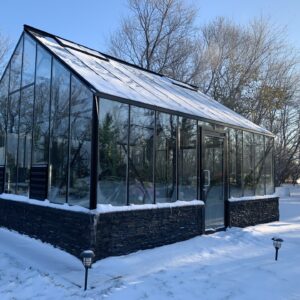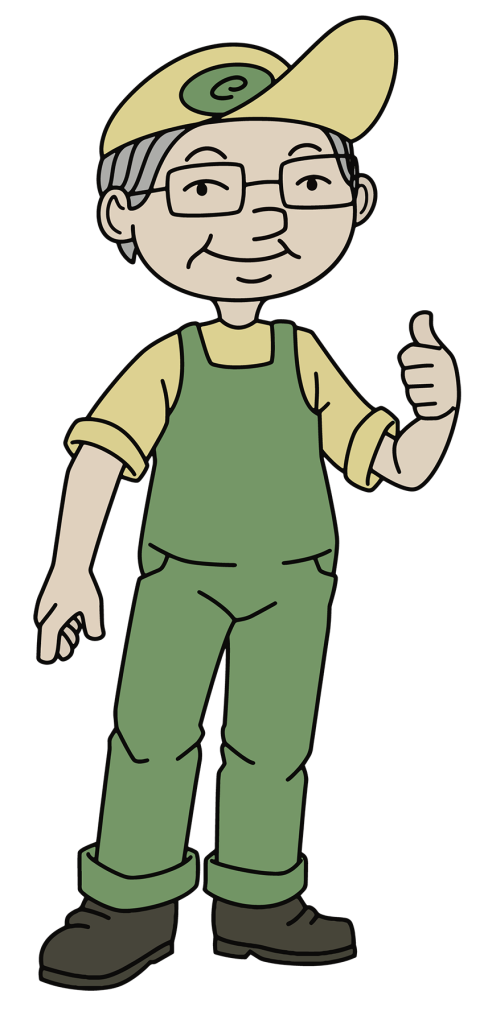By Carol Yaw
 In the dead of winter there is nothing more refreshing to a gardener than walking into a greenhouse full of thriving plants. This is a lifestyle to be envied and treasured-enjoying the scent of winter Jasmine or roses, picking tasty organic tomatoes and fresh salad greens for dinner, or just caring for plants as they mature and bloom. Growing plants out of season, or out of your climate zone, is rewarding for many greenhouse owners. However, proper supplemental lighting is a key factor for successful growing in winter.
In the dead of winter there is nothing more refreshing to a gardener than walking into a greenhouse full of thriving plants. This is a lifestyle to be envied and treasured-enjoying the scent of winter Jasmine or roses, picking tasty organic tomatoes and fresh salad greens for dinner, or just caring for plants as they mature and bloom. Growing plants out of season, or out of your climate zone, is rewarding for many greenhouse owners. However, proper supplemental lighting is a key factor for successful growing in winter.
Plant Grow Lights fall into two categories: (1) Lights for propagation and plants that will not grow more than 15″, and (2) lights for growing and maintaining mature plants over 15″ tall.
Fluorescent lighting fixtures with wide or full spectrum bulbs work well for propagating and low growing plants. These fixtures provide enough light energy when close to the plants, put out very little heat, and they are economical to run. Fluorescent lights are “low intensity” and need to be within 4-6″ of the plants to be most effective. Look for bulbs that have enhanced color spectrums to fully support the photosynthesis process, or “full-spectrum” bulbs, which closely mimics real daylight, resulting in vibrant colors of plants and flowers.
For the germination of seeds and for rooting cuttings, a light period of 16 hours produces satisfactory results. Prior to transplanting newly germinated seedlings and rooted cuttings a longer light period of up to 20 hours may be used with good results.
It is very important to purchase fluorescent fixtures with good ballasts. The better the ballast, the longer the bulbs last. Inexpensive shop fixtures have lower grade ballasts that will degrade bulbs quickly when operated for 12-16 hours daily.
Fluorescent lighting fixtures can hang from the roof rafters in the greenhouse, or there are freestanding fixtures that can be set on a bench. Many of the bench top models have easily adjustable reflectors so you can raise or lower the lights to the optimum distance from the tops of the plants. A freestanding light cart that has 3 or more fixtures will maximize the area for starting plants.
HID (High Intensity Discharge) Lights are recommended for mature plants that are over 15″ tall. The “high intensity” light energy is effective much farther away than fluorescent lighting. These are the same powerful lights used by professional greenhouse growers. HID lights are highly energy efficient. (It would take twenty 40 watt, 48 inch fluorescent lights to put out as much light as one 400 watt Metal Halide lamp.) With HID lights you can grow any plant, anywhere, anytime you choose.
HID lights come in two different types. MH (Metal Halide) provides a full light spectrum. It is the most effective light for indoor use where there is limited sunlight, or use MH to extend the day length in a greenhouse. HPS (High Pressure Sodium) has extra output in the yellow, orange and red spectrum. This increases flower quality, size and fruiting. It is the best choice for use in a greenhouse to supplement natural lighting. Recently, fixtures have become available that allow either bulb to be used, or both bulbs can be used at the same time. These fixtures provide the best of both worlds.
However, in standard lighting fixtures it is important that you never mix different lamps with your ballast. An HPS bulb should only be used in HPS ballasts, and a different watt bulb should not be put into a ballast that is not rated for that size. The bulb life could be reduced or it could explode.
These fixtures have a high amount of heat output. During the winter, this will help heat the greenhouse, but during the summer extra ventilation may be required. The generated heat requires that the fixtures be placed further away from the plants.
A good rule of thumb is a 250-watt lighting fixture should be 2-3 feet away from the plants and will have a primary growing area of about 3 feet by 3 feet in your greenhouse. There is a secondary growing area around the perimeter of another 18 inches. 400-watt fixtures should be 4-5 feet from the tops of the plants. They have a primary growing area of 4 feet by 4 feet with a secondary area of about 18 inches. A 600-watt light should be 5- 6 feet away and will provide a primary growing area of 6 feet by 6 feet. These fixtures have a secondary growing area of about 24 inches around the outside.
A Light Track System can be installed in your greenhouse to move the HID light back and forth over a bench. This greatly increases the growing area. The high intensity light fills the plants’ light receptors as it passes overhead. Be the time the plant has processed the light, the fixture has returned, completing the cycle. The plants respond as if they were in constant sunshine.
Using a heavy-duty, grounded timer will ensure that your plants are automatically receiving the optimal amount of HID light. Long day plants produce fruits and flowers when they receive 6-8 hours of darkness and 16-18 hours of light. A few examples are Gloxinia, Coleus and Bromeliad.
Day Neutral plants are the most commonly grown in greenhouses. They have also shown improved yields and performance with a longer 16-18 hour “on” cycle. These plants include Eggplants, Tomatoes, Sweet Peppers, Roses, Zinnias, Marigolds and Chilies. Day neutral Strawberries also are included in this list.
Work Lights- The work light is usually a fluorescent fixture mounted up at the peak of the greenhouse. This allows you to enjoy your greenhouse even if it’s dark outside. Work lighting is often over-looked, but running out to check on your plants with a flashlight can get pretty tiresome!
It is recommended that you use a waterproof fixture for work lighting, since the higher humidity in a greenhouse can degrade the terminals on the bulbs and cause rust in open fixtures. Shop fixtures are inexpensive, but have higher maintenance and lower reliability.
In conclusion, your lighting choices should be based on what kind of plants you are growing, and how much supplemental lighting your plants need during the different seasons.






